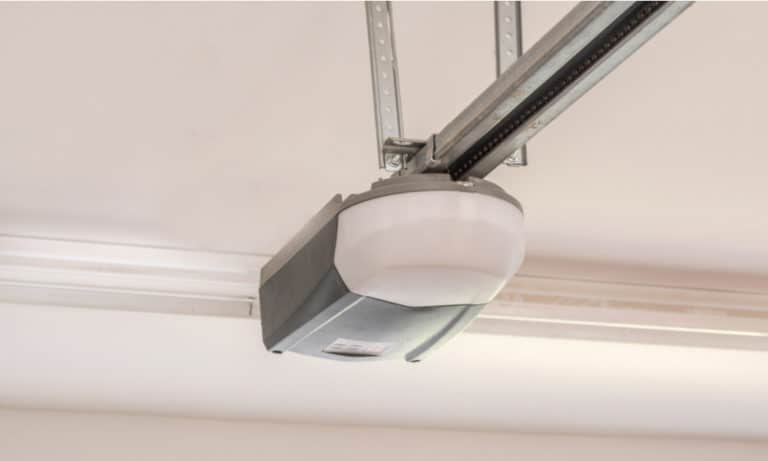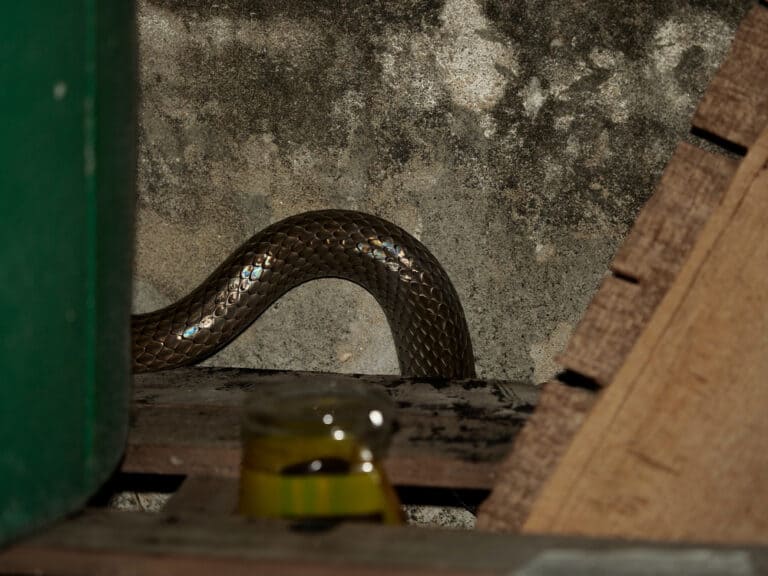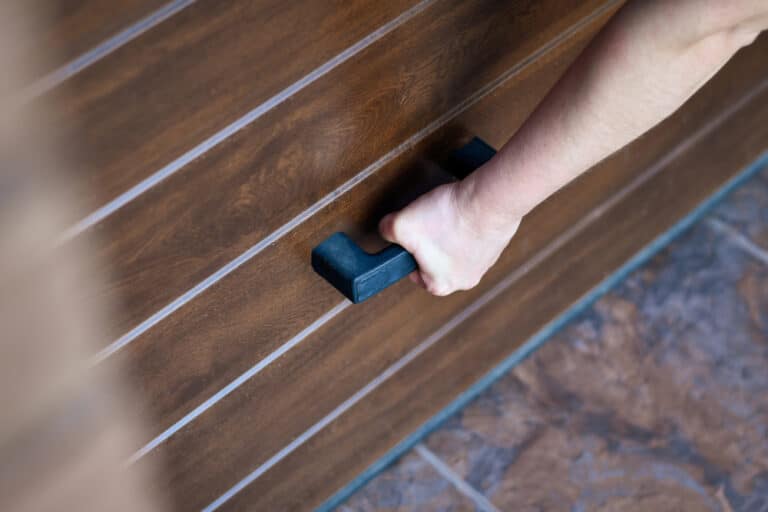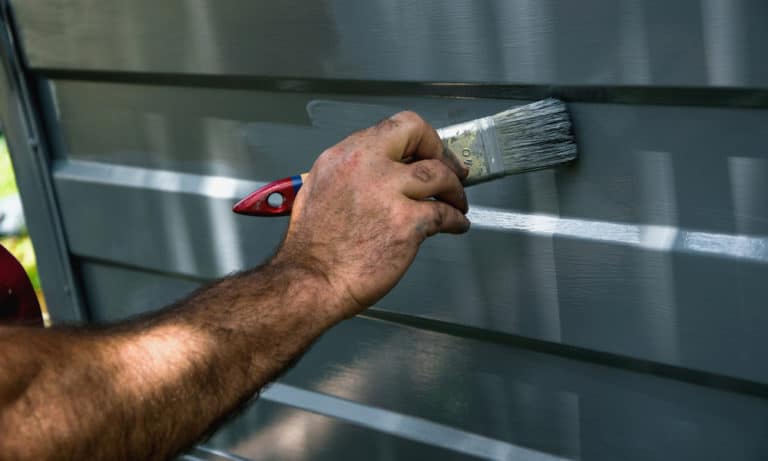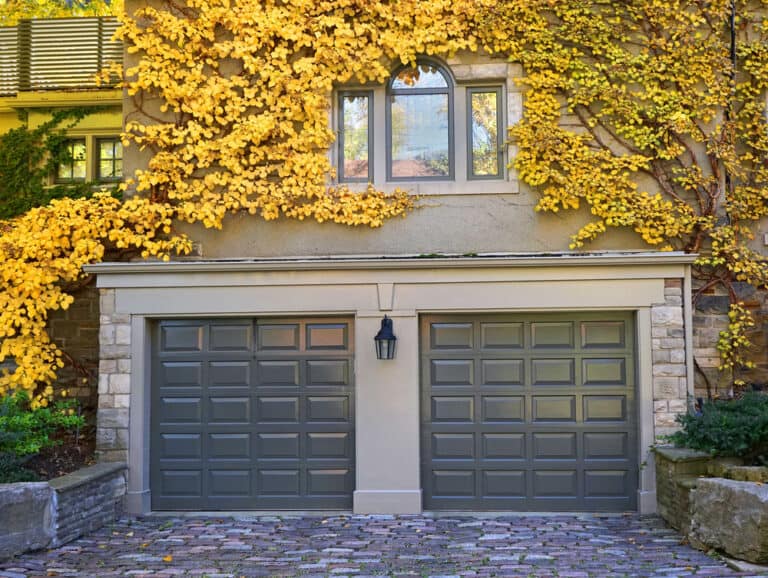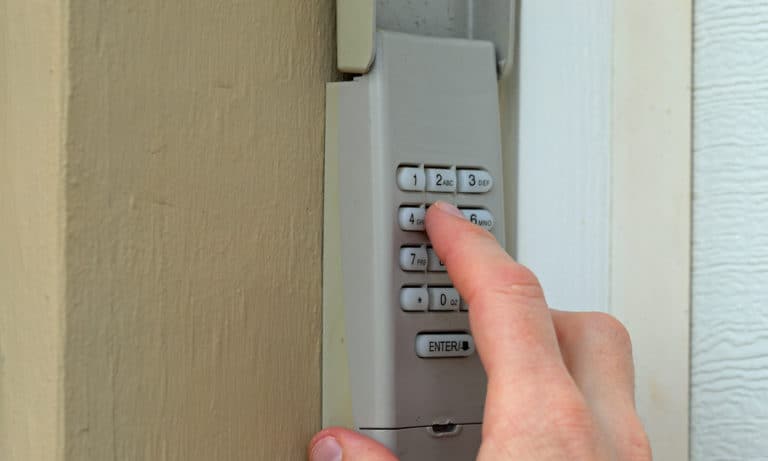Many of us are familiar with the annoying grating, creaking and screeching sounds of garage doors, and it’s an irritation that lots of people just ignore and learn to live with. However, you don’t have to put up with it – and ignoring it can even damage your door.
If your garage door rattles and moans when you operate it, that could mean it is in need of a little maintenance – and if you just leave it, it will only get worse. An important aspect of this is the proper lubrication of all the moving parts – so here’s how to lubricate a garage door.
If you want a preview of some of the stuff we’re going to be talking about – as well as one or two extra tips – you can check out this video before reading on.
What you’ll need to lube garage door
Here’s a list of the items you’ll need to complete this job.
- Rag
- Automotive brake cleaner or similar
- Vacuum cleaner
- Lubricant (see section below for help choosing the right one)
- Ladder
Choosing the right lubricant for the job
The most important item you need for this job is the lubricant itself, so it’s worth taking a moment to say a few words about how to choose the right kind.
The best lubricants for use on a garage door are silicone- or lithium-based spray-on lubricants. In either case, choosing a lubricant that comes in spray form will make the job considerably easier.
You should avoid using WD-40 since this is not actually a lubricant. People sometimes make the mistake of believing WD-40 is a lubricant due to its ability to break down rust and de-grease clogged up parts that are jammed.
However, by applying WD-40 to garage doors, you can even damage certain parts – so it’s best to avoid it.
Similarly, avoid using mechanic’s grease or engine oil. These work as lubricants, but they will also collect dust and grime, and eventually, this will cause the door mechanism to become blocked.
Instead, look for products that are specifically designed for use on garage doors because these will produce the best results, helping to keep your garage door in good working order for longer.
Step-by-step guide on How to Lubricate a Garage Door
Here are the steps you should follow to lubricate a garage door.
Step 1. Close the garage door
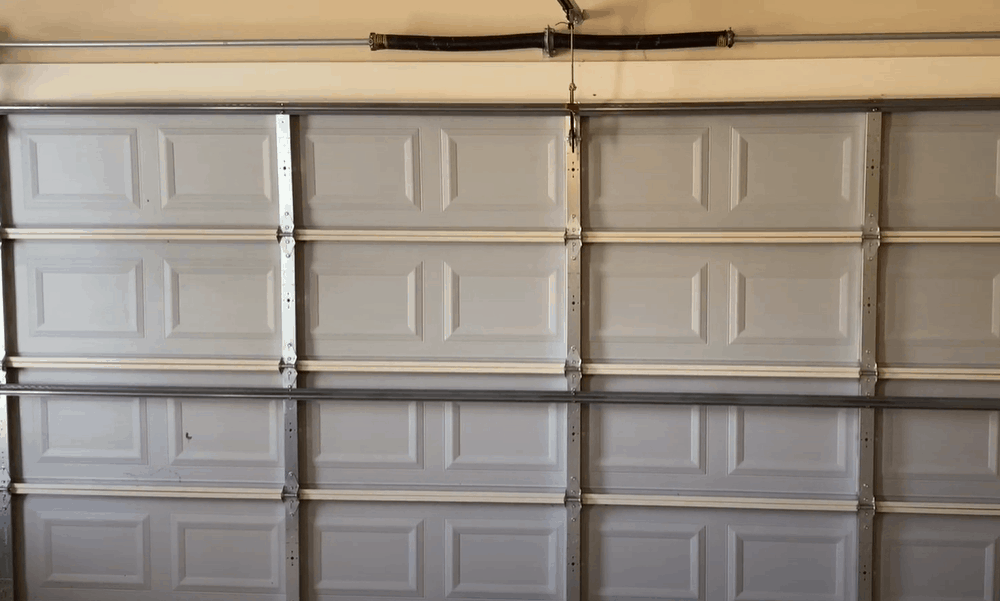
To work on the door and have good access to all the parts that need lubrication, the door needs to be in the “down” position – so before you start working, make sure the door is closed.
Step 2. Shut off the power
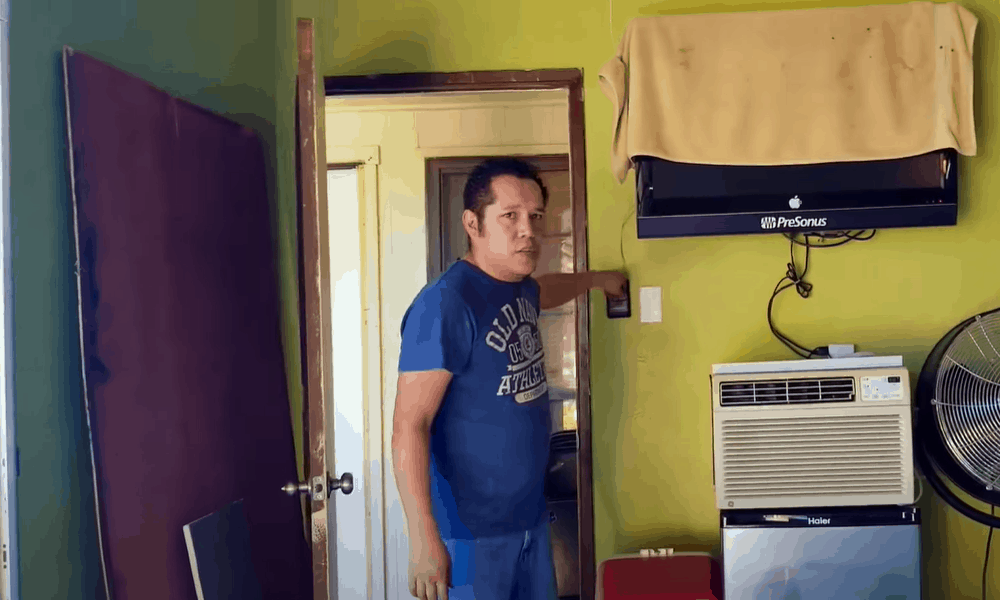
If the door opens unexpectedly while you are lubricating the parts, it could be dangerous, and you could even be injured. This means you need to make sure this can’t happen.
If you can, you should disconnect the garage door from the power source. This way, there is no risk of it being activated while you are working.
- Pro tip: Sometimes it can be hard to reach the power source to disconnect it. In this case, you can turn off the breaker in the circuit box to cut power to the door.
Step 3. Clean the tracks
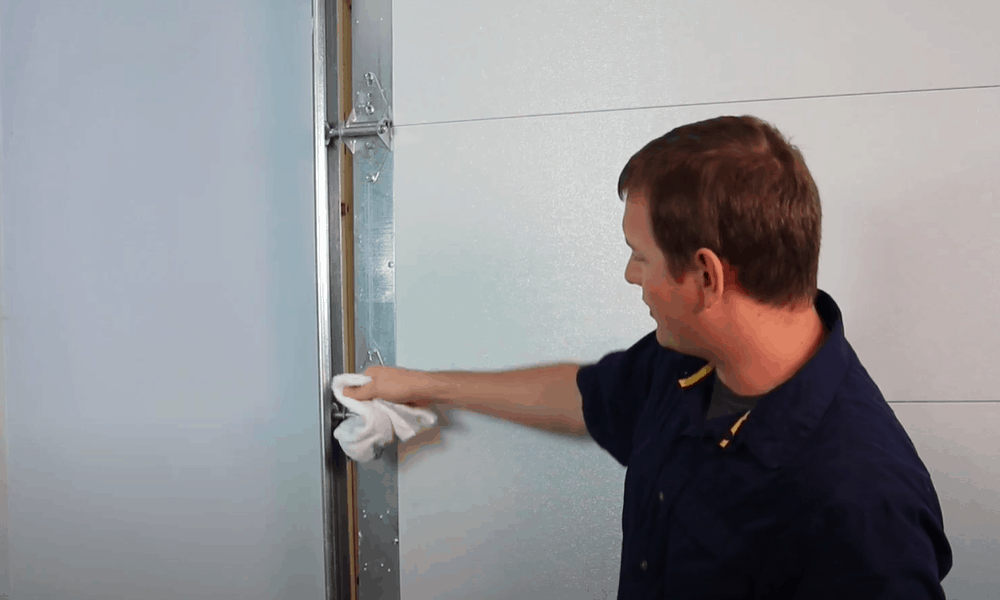
The first part you need to work on is the tracks. These can become clogged with a build-up of dirt and dust, so your first task is to remove any debris.
Take a damp rag and physically wipe any deposits out of the tracks to ensure the door can open and close smoothly.
Note that the tracks do not need to be lubricated – you just need to make sure they are free of any debris that can impede the door in its operation.
- Pro tip: If you find that there is an encrusted deposit of grime in the tracks because they haven’t been cleaned out for a long time, you might find it easier to use a product to help clear them. Something like automotive brake cleaner could be a good option for this.
- Pro tip: If you have a vacuum cleaner with a hose attachment, this can also be a useful way to clean debris from the tracks. Simply use it to suck out the dirt from the tracks.
Step 4. Lubricate the springs and the bearing plates
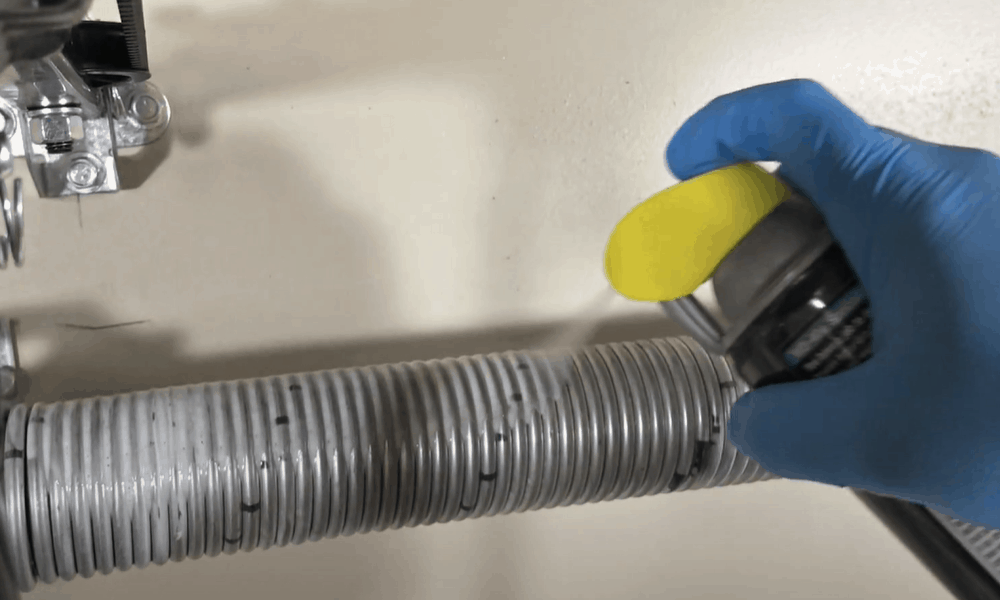
The springs, usually located at the top of the door, along with the bearing plates, need to be lubricated for the door to function smoothly. You will find the bearing plates on either side of the springs.
Use your spray-on lubricant to cover the outside of the springs, then spray some lubricant into the center of the bearing plates.
- Pro tip: You don’t want to leave the springs and the bearing plates dripping – rather, just spray enough to allow them to move freely without going over the top.
- Pro tip: You may need a ladder to reach these parts of the door. Make sure you have one ready before you start.
- Pro tip: When lubricating the springs, check to see that they are in good condition. If they are bent or damaged, you should have them replaced.
Step 5. Lubricate the hinges
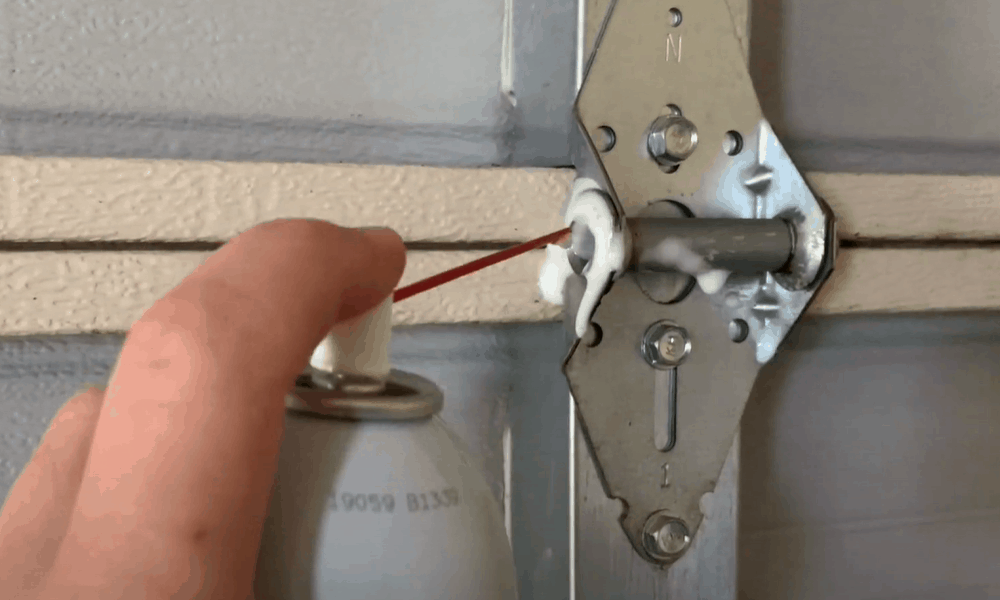
Unlubricated hinges can create a lot of noise, so your next step is to spray lubrication into each one to ensure smoother movement.
To do this, you need to lift the garage door up manually. When each hinge reaches the bend at the top, it will give you the best access, so when each reaches the top, you can spray in some lubricant.
- Pro tip: This job will be much easier to complete if there are two of you working. One person can lift the door while the other sprays on the lubricant.
- Pro tip: If your door has plastic hinges, you shouldn’t lubricate them. In fact, adding lubricant can damage them over time, so this should be avoided.
Step 6. Lubricate the rollers
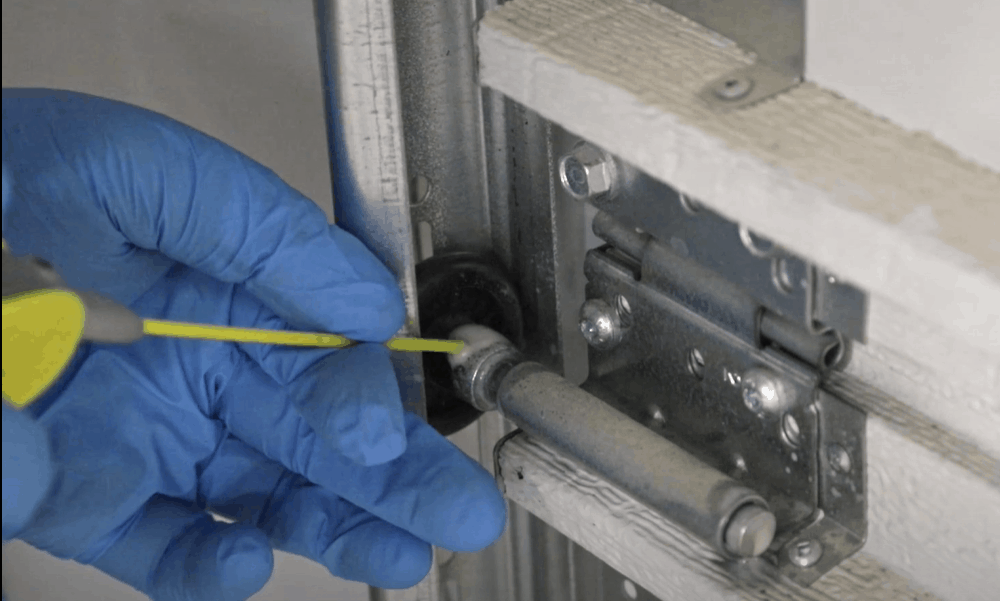
On the sides of your garage door, level with each set of hinges, you will find a set of circular rollers. They contain small ball bearings that allow the garage door to move up and down in the runners. However, for quiet operation, you need to ensure they are properly lubricated.
Use the hose attachment on your can of lubricant to apply the lubricant accurately and carefully.
- Pro tip: If your garage door has nylon rollers, you should take extra care not to get any lubricant on them – make sure you spray the lubricant onto the bearings only.
If you have metal rollers, this doesn’t matter as much, but you still don’t want to flood the rollers with lubricant or it will drip on the floor. Use just enough to lubricate the rollers effectively and wipe off any excess with a rag.
Step 7. Lubricate the top of the rail

This is the part that houses the chain, and it also needs lubricating. You need to spray on the lubricant and then wipe it down with a rag to ensure it is spread evenly.
- Pro tip: For this part, you should consult your user’s manual for specific instructions about how to lubricate it since the specifics can vary.
Step 8. Lubricate the lock
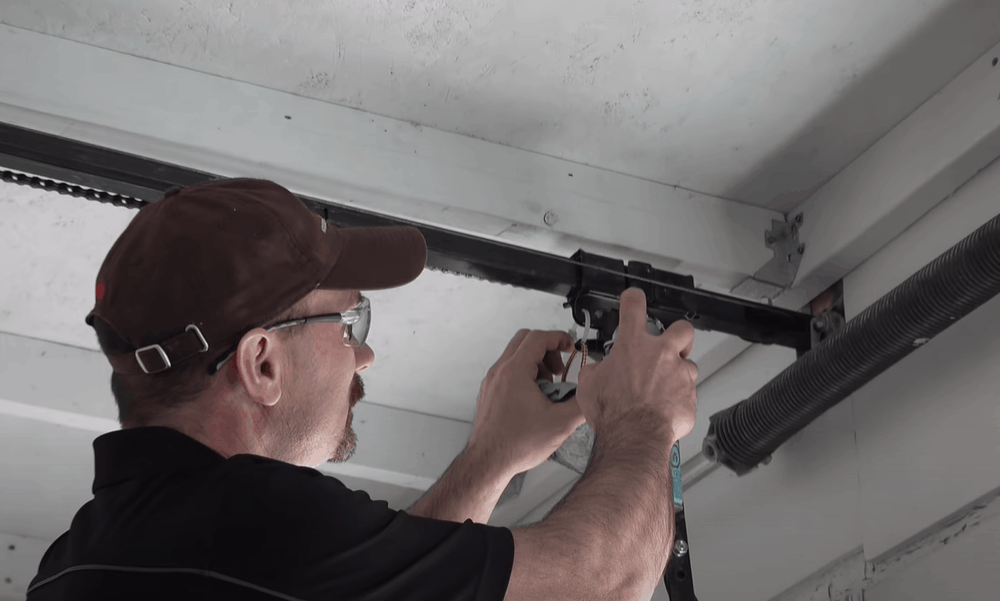
The last part that needs lubricating is the lock. This will make it easier to use and may also help keep rust at bay. Spray some lubricant into the keyhole, making sure you get some into the tumbler and other moving parts.
Step 9. Test everything
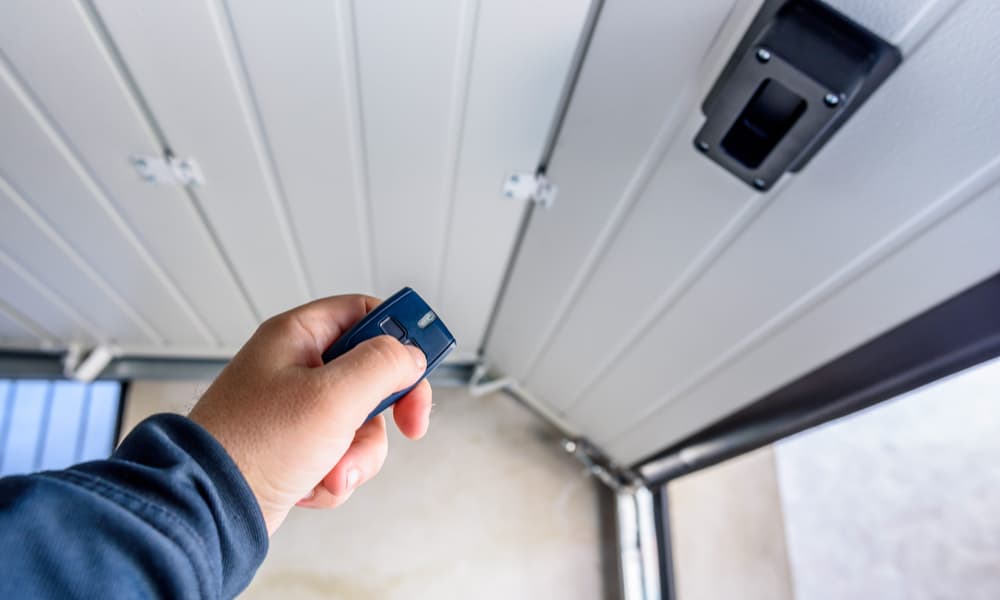
When you have finished lubricating all the various parts, you can reconnect the power and open and close the door a few times.
This will ensure all the lubricant is fully incorporated into the moving parts.
As you do this, listen to the door to see if there is still a significant amount of noise.
If it is still making a noise, it could mean you missed a spot, in which case you should check all the points that need lubrication again.
If you are sure you have lubricated all the moving parts that require it, it may mean something is damaged, so you should locate the broken part and have it replaced.
Extra pro tips
Here are a couple of other points to remember that will help you complete this job successfully.
- Read the manual
All garage doors are different, so you should consult your user’s manual for details of how to lubricate it and where. This will also tell you if there are any sections that shouldn’t be lubricated.
- It may be better to do these steps in a different order
The steps we have given you here will be the same for most garage doors. However, depending on the model, you may find it is easier to do them in a different order. This means you should be ready to adapt what you do depending on the model you have in your home.
Keep your garage door lubricated for smooth, quiet operation
In order to keep your door running smoothly and quietly, you need to ensure it is properly lubricated. Not only will this ensure it makes less irritating noise, but it will also help keep it in good working order, extending the life of the various parts.
As you can see, lubricating a garage door is not difficult. As long as you have the right equipment – including a good garage door lubricant – by following the steps in our guide, you will be able to keep your garage door in perfect working order.

